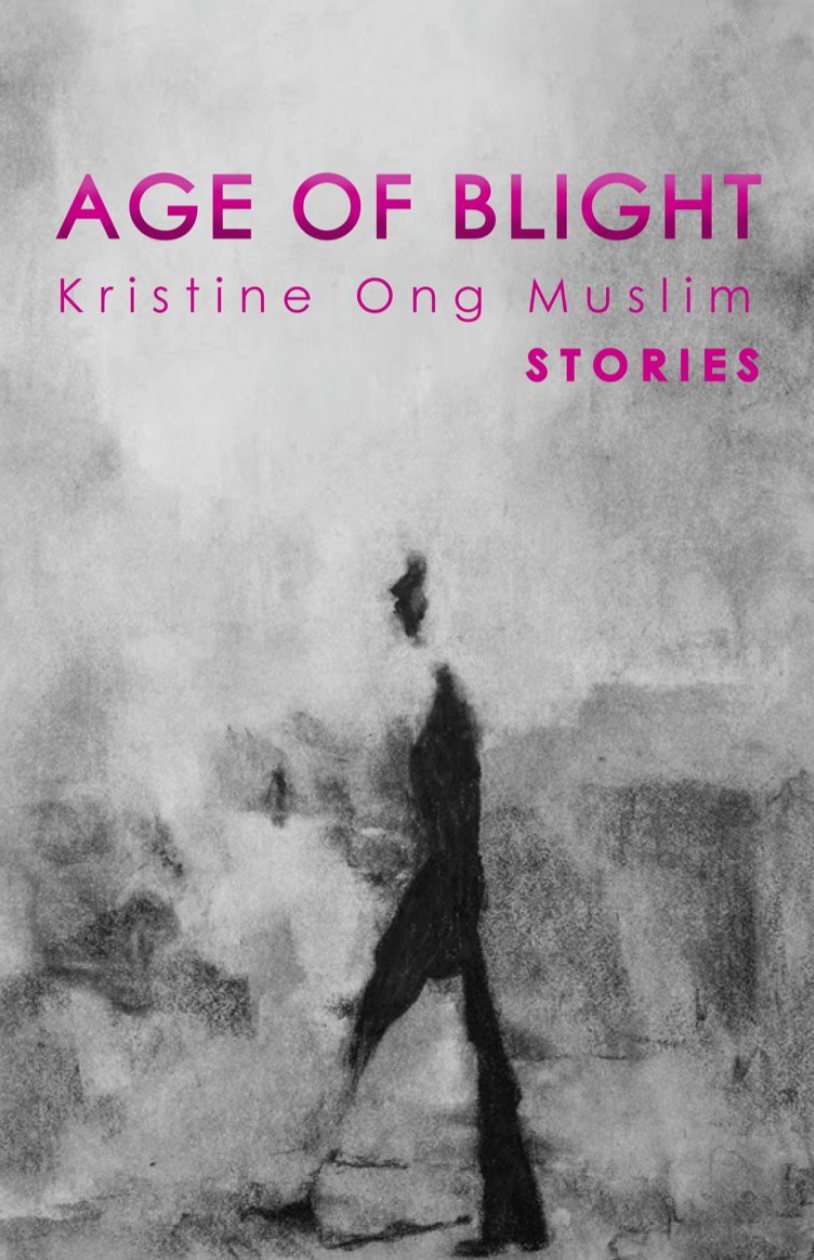REVIEW of Kristine Ong Muslim’s Age of Blight
Age of Blight
Unnamed Press
January 2016
ISBN: 978-1939419569
144 pages
reviewed by Kayla Rae Whitaker
Something crucial to understanding the world of Kristine Ong Muslim’s collection Age of Blight is revealed in its wonderfully weird story “Zombie Sister.” Once clinically dead, the narrator’s sister, Beth, has returned to life, of some sort (the attending doctor is casual, commenting, “Every family has one”). The situation is not without its humor—“We observed from the corner of our eyes how she sloppily buttered her toast and crammed it inside her mouth. How was she going to digest it?”—but the family is at a loss as to how to tell Beth she is one of the undead. It is Dad, finally, who breaks the silence with, “Let me know when you are ready for the formaldehyde treatment.”
The narrator supplies revealing context: “It was father who was schooled in the inevitable reality of irreversible entropy in classical thermodynamics…he never had it in him to care about anything except for matters directly related to his personal welfare. That and boxing. He loved boxing.”
The world of Age of Blight is ours, a century or so into the future, with all the technological advancement and environmental decay one might expect and the added, unpleasant surprise of a millenium’s worth of moral and empathetic regression. The population has succumbed to a shadowy, isolated resignation at the fact that its extinction is imminent, bringing it that much closer to its own natural brutality. That this world is dialed only a few clicks to the left of ours lends it a delicate spookiness, a darkness that resides in the bones. Muslim does not quibble with redemption, but bravely proceeds with the unappetizing truths. As one character informs us, “Happy endings are just curses told evasively.”
The collection’s focus is sustained on those who are, perhaps, the most vulnerable: children and animals, specifically those who find themselves deviating dangerously from societal norms. Narrators range from the Alpha Space Dog of Sputnik 2, “cooked to death” in orbit (“Have you seen my collectible stamp?” he asks. “I am gazing in the direction of the person who was coaxing me to mug for the camera because I was going to get a steak later”) to the dispassionate lab report of the superb “No Little Bobos,” in which researchers seek to demonstrate their theory that “the brain treats aggression as a form of reward” and encounter the ruthless ten-year-old Chelsea, who beats the hell out of Bobo, the weeble clown used as the experiment’s focus. Her sheer brute force classifies her as a wunderkind; it is said that she will some day be president. She is given milk, a rare delicacy, as a reward. Her taste for richness cultivated, Chelsea promises all the destruction they want for more: “Can I have milk now?” she says.
Blight is notable not only for characters discovering their own sense of casual savagery, but the sinister whimsy with which these stories are related. In “Dominic & Dominic,” six-year-old Dominic impulsively buries his fingernails in his backyard, where—surprise!—another Dominic begins to grow. In a more benign world, the story might succumb to cuteness, but in this world of limited resources, even identity is a valued commodity; there cannot be two Dominics. The focus of “Beautiful Curse” describes, with a mixture of sadness and excitement, the surfacing of his natural “predatory urges” at the brink of adolescence, despite the removal of his tentacle at birth. He is discovered behind the family shed, eviscerating a chicken with his teeth. He cannot help but indulge; yet still mourns the necessary distance from loved ones that his new appetites will bring.
What grants Blight its strange grace is the reality that in this world, like ours, the degree to which people hold fast to one another in combating the unknown remains. We grieve our end in the same way we grieve for anything gone. The narrator of “Zombie Sister” describes the loss of her (living) sister: “[I]solation would draw her in, because pure isolation, having no notion of emotional pain, would seek out those that belonged to its fold.”
In any world, it is easier to resort to rage than to a kindness that perhaps does not come naturally to man, calling, as kindness does, for reserving the need for satisfaction. Consumption has brought us to the point of extinction; we will die, it seems, consuming each other. Blight is a reminder that there is more to man than his need for satisfaction; finer instincts, without protection, run the risk of eradication. As the killer boy with the phantom tentacle tells us, “I have plenty of stories left in me.” But, disquietingly, “now, they’re mostly about the hunt, the hunt, the hunt.”
Kayla Whitaker holds an MFA in fiction from New York University, and her work has appeared in Smokelong Quarterly, BODY, Bodega, Joyland, The Switchback, Five Quarterly, and others. Twice nominated for the Pushcart Prize, she recently appeared alongside such luminaries as Lynyrd Skynyrd as a commentator in the History Channel’s southern culture documentary You Don’t Know Dixie. Originally from Eastern Kentucky, she currently lives in New York. Her debut novel is forthcoming from Random House in January 2017.

